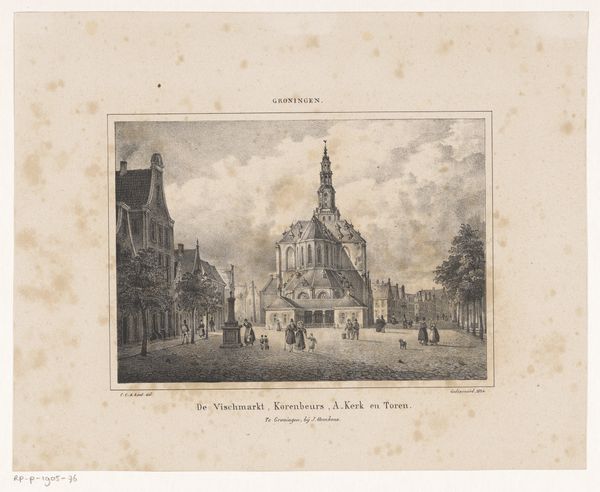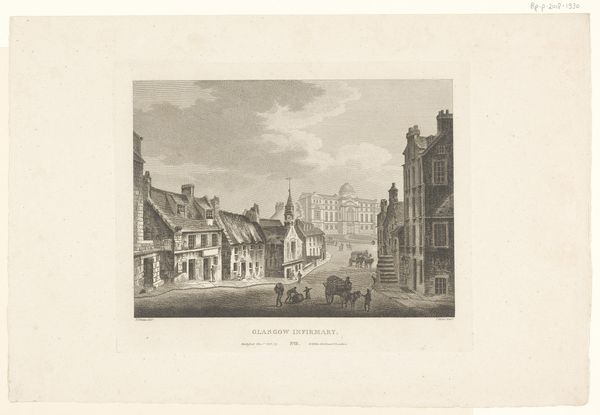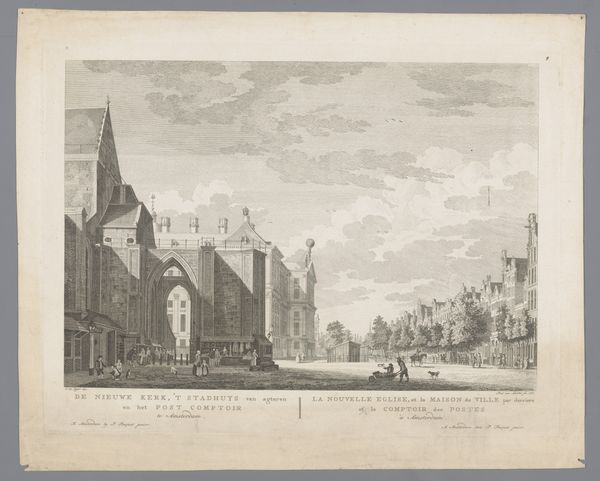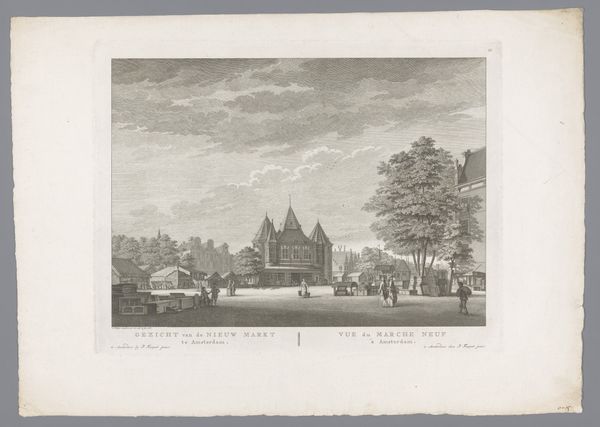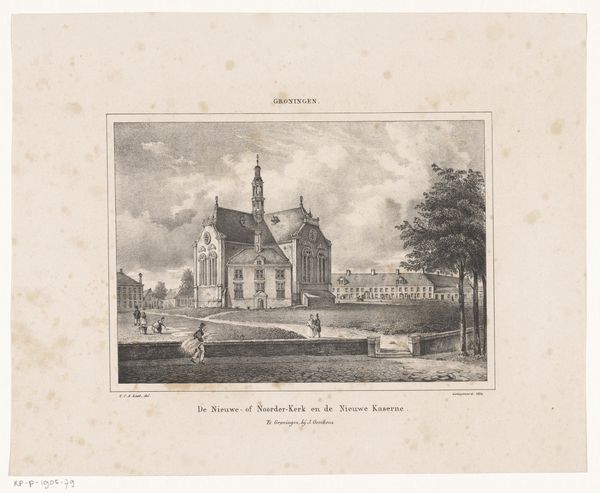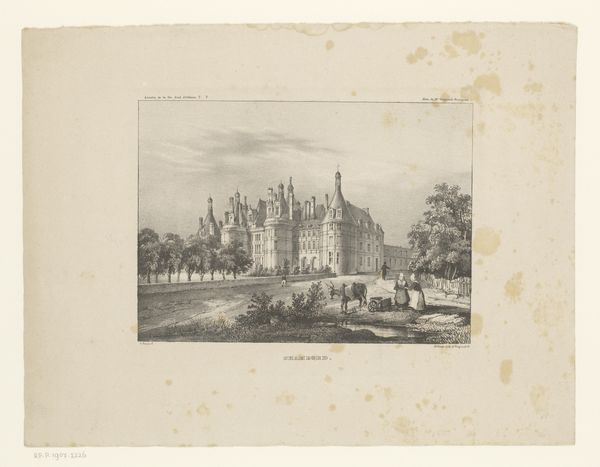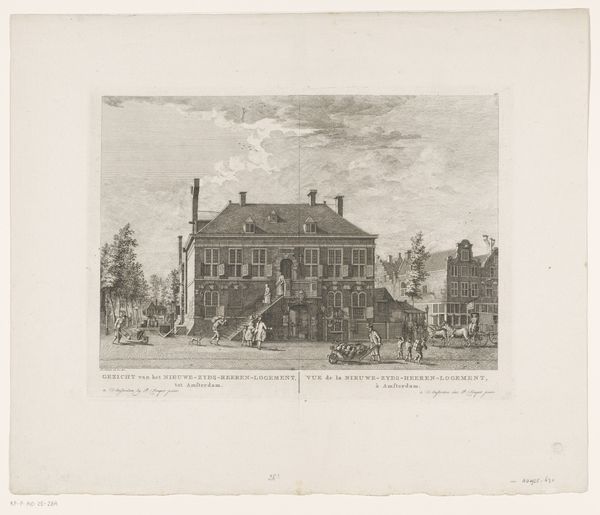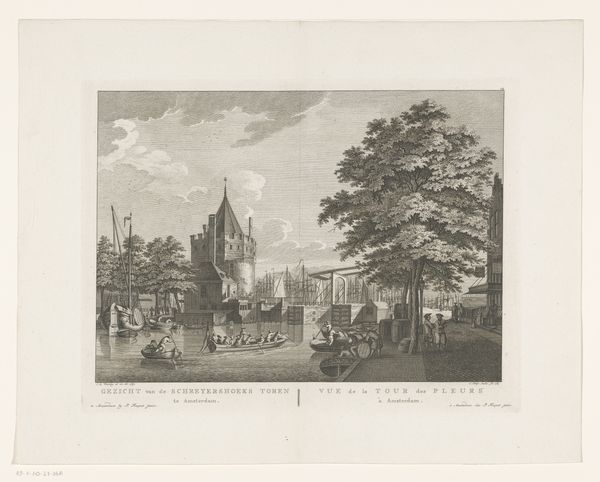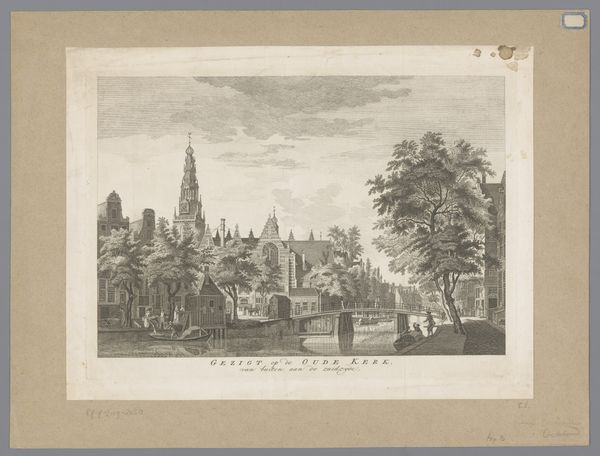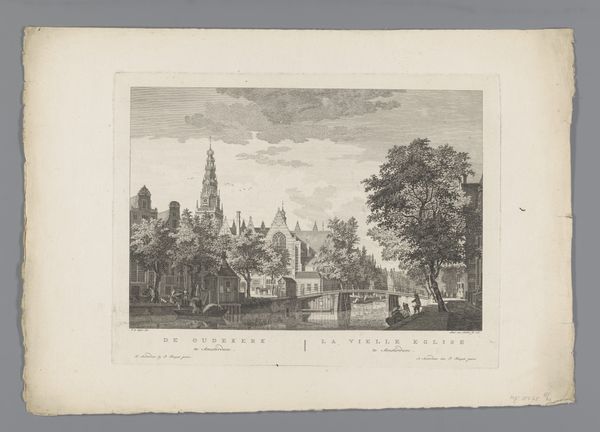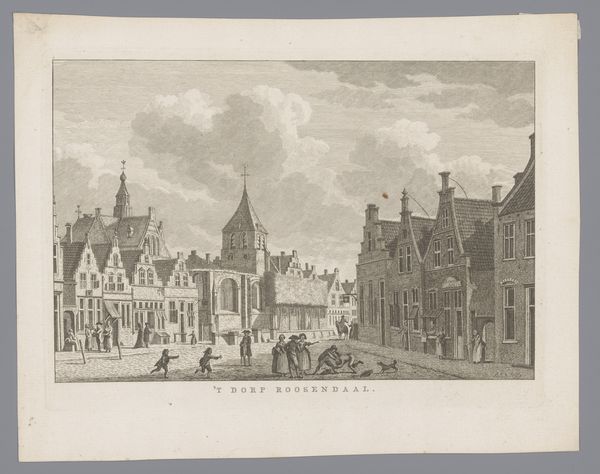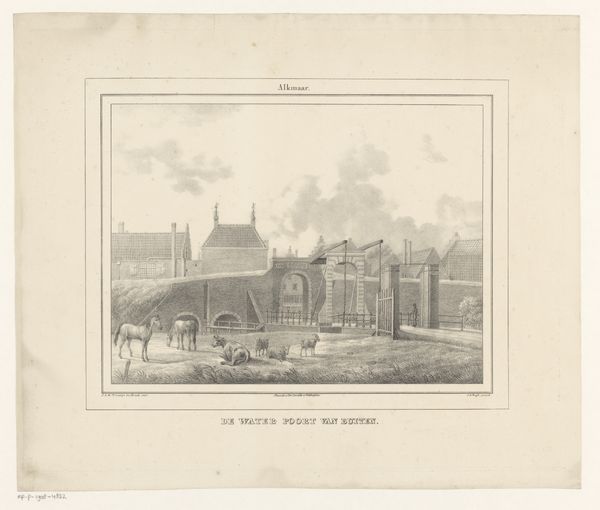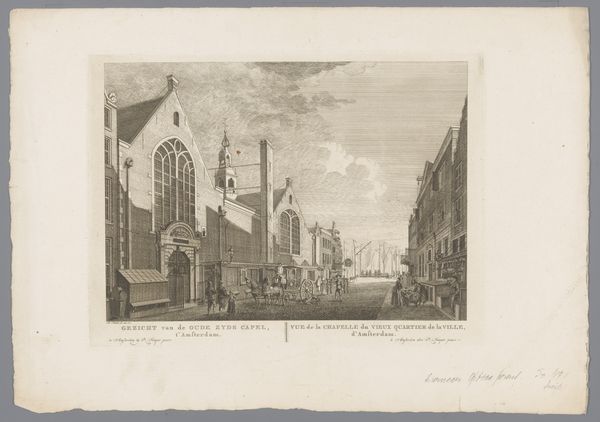
print, engraving
#
neoclassicism
# print
#
pencil sketch
#
old engraving style
#
landscape
#
cityscape
#
watercolour illustration
#
engraving
#
watercolor
Dimensions: height 235 mm, width 295 mm
Copyright: Rijks Museum: Open Domain
Curator: This is Carel Christiaan Antony Last's 1834 engraving, "Provinciehuis en Martinikerk te Groningen," currently held at the Rijksmuseum. It's a detailed cityscape of Groningen. Editor: It’s so meticulous! The light and shadow create a rather somber, reflective atmosphere, wouldn't you say? Look at the layering of the architecture against the somewhat bleak sky. Curator: Last skillfully employs Neoclassical elements. The composition offers this clear perspective and precise linework we associate with the style. The Martinikerk, especially, symbolizes the city's spiritual and historical heart. But I’m curious about the process, those delicate engravings… Editor: Precisely! The printing techniques of the period played a crucial role. Each line, each shadow demanded focused labor, reflecting the growing availability of printed imagery for consumption by a rising middle class. How easily were these prints made, what sort of skill would someone need to achieve that level of precision? Curator: One might ponder the people included, walking and engaging. Their presence suggests an intersection of secular and sacred spaces. How Last depicted them is so indicative of society at the time. It reminds me how much of human culture resides in collective memory and experience of public spaces. Editor: That interaction emphasizes accessibility; these engravings put Groningen on display, converting the town into a consumable good. It’s interesting to examine this from an economic perspective. Consider who commissioned this piece, who was it meant to be viewed by? These are clues. Curator: Considering the social impact, there must have been many more depictions that came out as prints at the time! And thinking more about its reception then versus our interpretation now reveals an ongoing dialogue. Editor: I agree; even these kinds of material representations change how we understand places, giving rise to new kinds of civic engagement and pride, then and now. It encourages us to keep questioning.
Comments
No comments
Be the first to comment and join the conversation on the ultimate creative platform.
